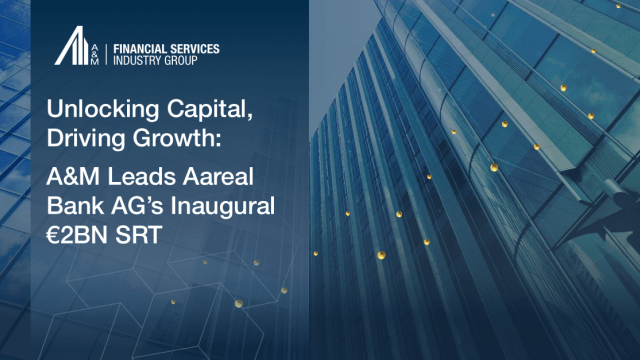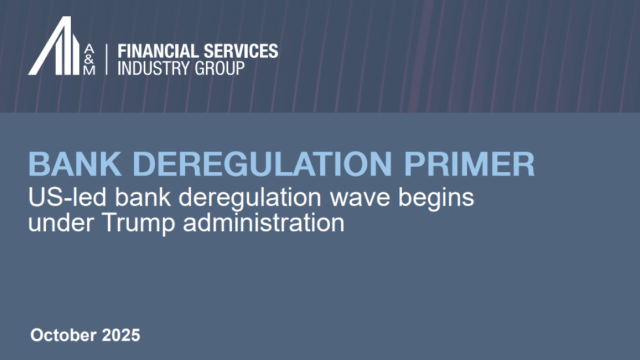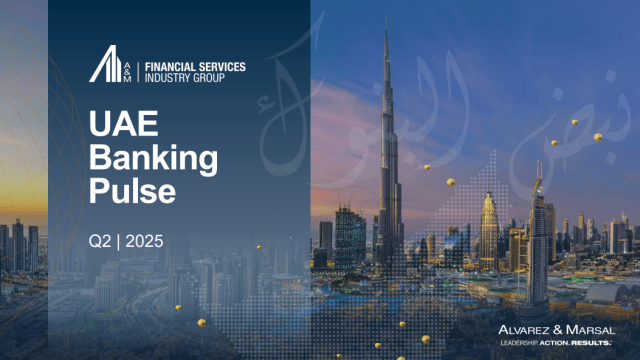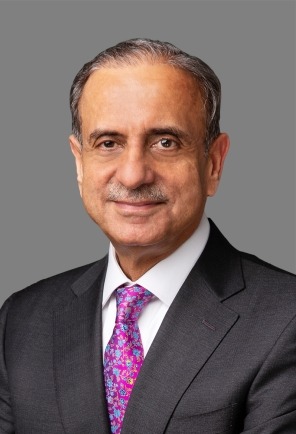ALVAREZ & MARSAL RELEASES SAUDI ARABIA BANKING PULSE FOR Q2 2025
- Profitability moderated as net income rose 3.4% QoQ, supported by stronger non-interest income alongside a more measured pace of lending and deposit growth.
- Loan-to-deposit ratio declined slightly to 105.9%, supported by a higher share of government deposits, which strengthened overall funding conditions.
- Cost efficiency strengthens further, with eight of ten banks improving cost-to-income ratios.
Riyadh, 8th October, 2025 – Leading global professional services firm Alvarez & Marsal (A&M) has released its latest edition of the Kingdom of Saudi Arabia (KSA) Banking Pulse for Q2 2025. The report, which analyzes the performance of the Kingdom’s 10 largest listed banks for the second quarter of 2025, highlights continued resilience, effective cost management, and steady profitability, supported by diversified income streams and strong funding contributions.
Net loans and advances grew 2.5 percent quarter-on-quarter (QoQ), led by 3.9 percent growth in corporate lending, reflecting sustained demand from large projects and Vision 2030-linked investments. Retail lending expanded modestly by 0.6 percent. Deposits increased by 2.7 percent QoQ, with government-related entity (GRE) deposits rising to 31.9 percent of total deposits. As a result, the sector’s loan-to-deposit ratio (LDR) remained comfortably high at 105.9 percent, underscoring a balanced funding environment.
Operating income increased by 2.0 percent QoQ to SAR 39.3 billion, marking the fifth consecutive quarterly rise. This was supported by a 5.6 percent increase in non-interest income, reflecting stronger activity in trade finance, wealth management, and payments. Net interest income rose by 0.9 percent QoQ, while fee and commission income grew 2.4 percent. Aggregate net income rose by 3.4 percent QoQ to SAR 22.9 billion, demonstrating the sector’s ability to maintain profitability through income diversification and operational discipline.
While net interest margin (NIM) contracted by 8bps to 2.80% due to higher funding costs, banks demonstrated resilience through effective cost management. The aggregate cost-to-income ratio (C/I) improved by 30bps to 29.5 percent, with eight of ten banks reporting stronger efficiency. Asset quality indicators also strengthened, with the NPL ratio declining marginally to 1.0 percent and the coverage ratio rising by 113bps to 155.9 percent.
Return on equity (RoE) increased by 12bps to 15.4 percent, while return on assets (RoA) remained robust at 2.0 percent, reflecting steady sector performance.
The country’s 10 largest listed banks analyzed in A&M’s KSA Banking Pulse are Saudi National Bank (SNB), Al Rajhi Bank, Riyad Bank (RIBL), Saudi British Bank (SABB), Banque Saudi Fransi (BSF), Arab National Bank (ANB), Alinma Bank, Bank Albilad (BALB), Saudi Investment Bank (SAIB), and Bank Aljazira (BJAZ).
Mr. Sam Gidoomal, Managing Director and Head of Middle East Financial Services, noted: “Saudi banks continue to demonstrate financial resilience and adaptability, supported by strong capital positions and effective cost discipline. The combination of balanced loan growth, healthy funding from government deposits, and growing fee-based income reflects the sector’s strategic alignment with Vision 2030 priorities and its vital role in financing the Kingdom’s ambitious development agenda.”
Mr. Quentin Mulet-Marquis, Managing Director, Financial Services commented: “The KSA banks entered H2 2025 from a position of strength – despite episodic share price volatility, the Saudi banking sector remains resilient, supported by strong fundamentals, domestic buffers and increasing profitability and RoE. Meanwhile, foreseeable pressure on banks’ profitability stemming from lower rates – which to-date have been offset by growth in non-interest income, lower cost of risk and strong cost discipline – coupled with comfortable capital buffers, increased competition and healthy valuation multiples support a gradual increase in M&A activity in the sector.
With a fully staffed team of Financial Services M&A professionals in the Middle East, we are ideally positioned to assist banks in exploring and executing on their inorganic strategy.”
The prevailing trends identified for Q2 2025 are as follows:
- Net loans and advances grew 2.5% QoQ, supported by corporate lending (+3.9% QoQ) and measured retail expansion (+0.6% QoQ).
- Deposits increased 2.7% QoQ, with government deposits rising to 31.9% of the total, reinforcing funding stability.
- Loan-to-deposit ratio (LDR) remained steady at 105.9%, reflecting balanced credit and funding conditions.
- Operating income rose 2.0% QoQ, underpinned by a 5.6% increase in non-interest income.
- Cost-to-income ratio improved by 30bps to 29.5%, with efficiency gains reported by most banks.
- Return on equity (RoE) increased to 15.4%, supported by higher net income and cost discipline.
OVERVIEW
The table below sets out the key metrics:
| CATEGORY | METRIC | Q1 2025 | Q2 2025 |
| Size | Loans and Advances Growth (QoQ) | 5.4% | 2.5% |
| Deposits Growth (QoQ)) | 4.0% | 2.7% | |
| Liquidity | Loan-to-Deposit Ratio (LDR) | 106.1% | 105.9% |
| Income & Operating Efficiency | Operating Income Growth (QoQ) | 3.2% | 2.0% |
| Operating Income / Assets | 3.6% | 3.5% | |
| Non-Interest Income / Operating Income | 23.0% | 23.7% | |
| Yield on Credit (YoC) | 8.0% | 8.0% | |
| Cost of Funds (CoF) | 3.3% | 3.4% | |
| Net Interest Margin (NIM) | 2.87% | 2.80% | |
| Cost-to-Income Ratio (C/I) | 29.8% | 29.5% | |
| Risk | Coverage Ratio | 154.8% | 155.9% |
| Cost of Risk (CoR) | 0.27% | 0.25% | |
| Profitability | Return on Equity (RoE) | 15.3% | 15.4% |
| Return on Assets (RoA) | 2.1% | 2.1% | |
| Return on Risk-Weighted Assets (RoRWA) | 2.7% | 2.0% | |
| Capital | Capital Adequacy Ratio (CAR) | 19.3% | 19.5% |
Source: Financial statements, investor presentations, A&M analysis
Mr. Asad Ahmed, A&M Managing Director, Financial Services commented: “Saudi banks’ Q2 results demonstrate consistent progress across profitability, cost management, and asset quality. The sector’s solid capital adequacy and prudent risk management provide strong foundations for supporting the Kingdom’s growth agenda. As Vision 2030 projects continue to expand, banks are positioned to deliver sustainable financing solutions that reinforce Saudi Arabia’s long-term economic transformation plans.”
ENDS
Methodology
A&M’s KSA Banking Pulse examines data of the 10 largest listed banks in the Kingdom, comparing the Q2 25 results against Q1 25 results. Using independently sourced published market data and 16 different metrics, the report assesses banks’ key performance areas, including size, liquidity, income, operating efficiency, risk, profitability, and capital.
The country’s 10 largest listed banks analyzed in A&M’s KSA Banking Pulse are Saudi National Bank (SNB), Al Rajhi Bank, Riyad Bank (RIBL), Saudi British Bank (SABB), Banque Saudi Fransi (BSF), Arab National Bank (ANB), Alinma Bank, Bank Albilad (BALB), Saudi Investment Bank (SIB) and Bank Aljazira (BJAZ).
About Alvarez & Marsal
Founded in 1983, Alvarez & Marsal is a leading global professional services firm. Renowned for its leadership, action and results, Alvarez & Marsal provides advisory, business performance improvement and turnaround management services, delivering practical solutions to address clients' unique challenges. With a world-wide network of experienced operators, world-class consultants, former regulators and industry authorities, Alvarez & Marsal helps corporates, boards, private equity firms, law firms and government agencies drive transformation, mitigate risk and unlock value at every stage of growth.
To learn more, visit: AlvarezandMarsal.com.
CONTACT: Adnan Abou Rashid +966 55 455 2630 Hanover Middle East







